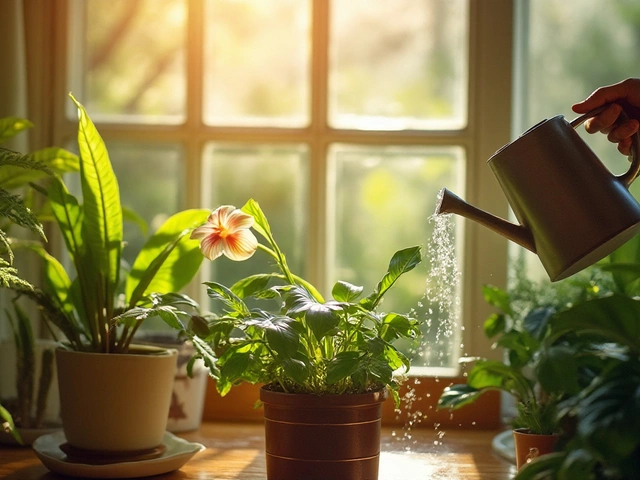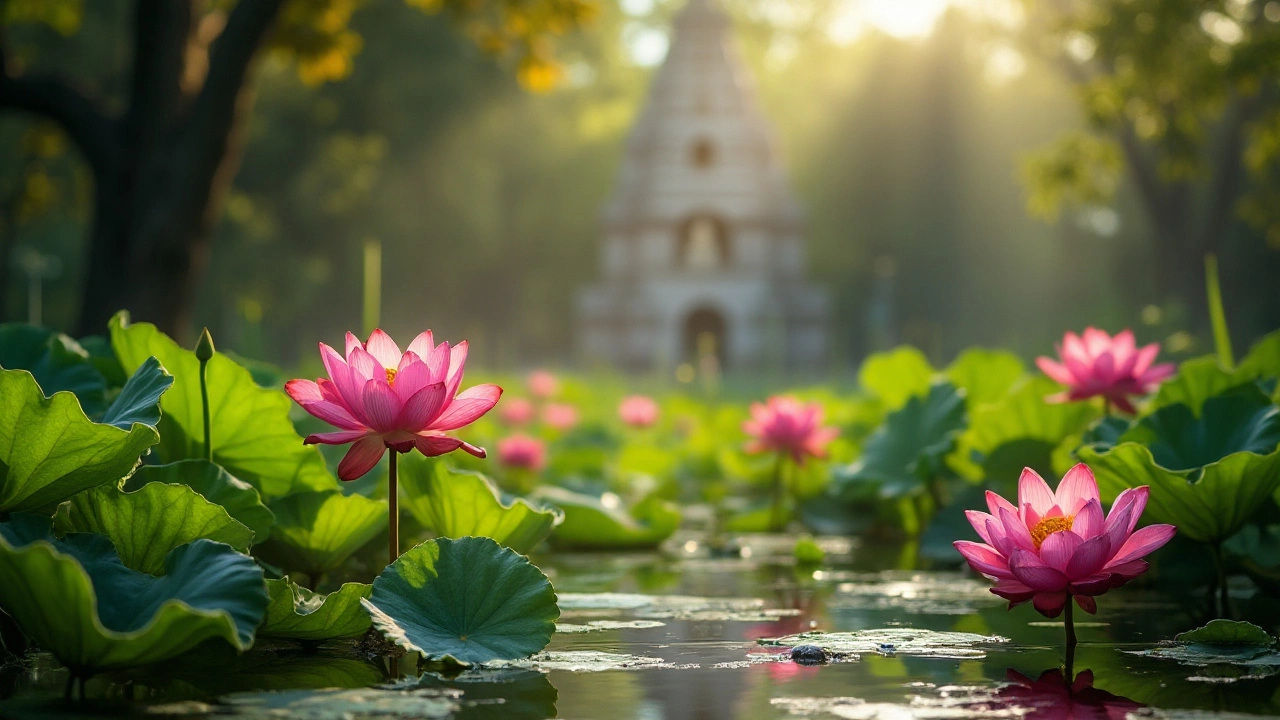Lotus Symbolism: Meaning, Spiritual Significance & Garden Tips
If you’ve ever stopped to admire a lotus floating on a pond, you’ve probably felt a calm you can’t easily explain. That feeling isn’t random – the lotus has been a symbol of purity, rebirth, and inner strength for centuries, especially in India. In this guide we’ll break down what the lotus stands for, why it matters in everyday life, and how you can let its vibe into your own garden.
Cultural Roots of the Lotus
In Indian mythology, the lotus pops up everywhere – from the birth of gods to the decoration of temples. It’s seen as a sign that something beautiful can rise out of muddy water, which is why it’s often linked to spiritual awakening. When you see a lotus bloom, it reminds you that even if life feels chaotic, you have the power to stay clean and focused.
Hindu scriptures describe the lotus as the seat of many deities. For example, Lord Brahma is said to sit on a lotus, and Goddess Lakshmi uses it as a platform for wealth and prosperity. That’s why many families place lotus motifs on altars – they’re asking for blessings that stay pure no matter the surrounding mess.
The Buddhist tradition also reveres the lotus. The Buddha’s first steps were said to be on a lotus flower, and the path to enlightenment is often illustrated as a series of blooming lotuses. In short, the lotus is a visual shortcut for ideas like growth, renewal, and staying true to yourself.
Bringing Lotus Symbolism to Your Garden
Want to feel that calm every day? Adding a lotus pond to your garden can turn a simple backyard into a meditation spot. If space is tight, start with a small water basin and a few lotus rhizomes. They need sunlight, warm water (around 70‑80°F), and a depth of at least 12 inches to thrive.
Even if you can’t grow real lotuses, you can still capture their essence. Use lotus‑shaped planters, paint a lotus design on a garden wall, or pick other plants that echo its meaning – white lilies for purity, and green foliage for resilience. Pair these with stone lanterns and a quiet seating area to make the space feel meditative.
When you plant, think about the symbolism. Position the lotus at the far end of the pond, so it becomes a focal point you’re drawn toward. Keep the water clear by using a filter or changing it regularly – the clearer the water, the stronger the visual of a pristine flower rising from mud.
Finally, treat the garden as a ritual. Spend a few minutes each morning watching the lotus, breathing in the fresh air, and setting an intention for the day. This simple habit links the ancient symbolism with modern stress relief.
Whether you’re a seasoned gardener or just starting out, the lotus offers a powerful reminder: beauty can grow from the messiest places. By understanding its cultural roots and bringing a touch of it into your own space, you invite calm, clarity, and a dash of spiritual flair into everyday life.
Exploring India's Sacred Lotus: A Symbol of Purity
The sacred lotus is renowned as a symbolic flower in India, embodying purity and transcendence. Rooted in the heart of Indian culture, this flower is celebrated for its beauty and spiritual significance in various religions. It plays an integral role in mythology and art, often depicted in traditional stories and paintings. Beyond its cultural importance, the lotus requires specific conditions to thrive in gardens, serving as a delightful challenge for gardeners. Learn about its historical impact and practical gardening tips for cultivating this beloved symbol in your home garden.
About
Flower Gardening
Latest Posts


How Deep Should Drip Irrigation Lines Be Buried? Guide for Optimal Water Delivery
By Alden Thorne Sep 23, 2025

Optimal Times for Watering Indoor Plants: Night Vs. Day
By Alden Thorne Jan 10, 2025

Make a Large Yard Feel Cozy: Terrace Gardening Tips That Work
By Alden Thorne Jun 17, 2025

